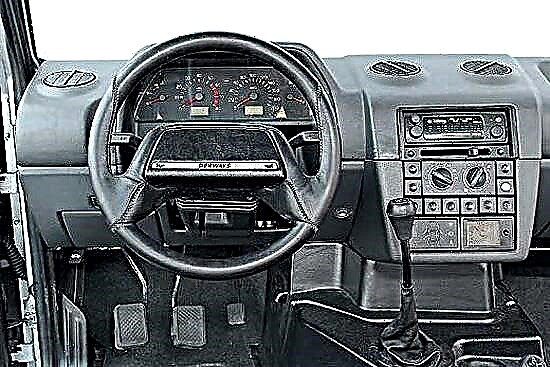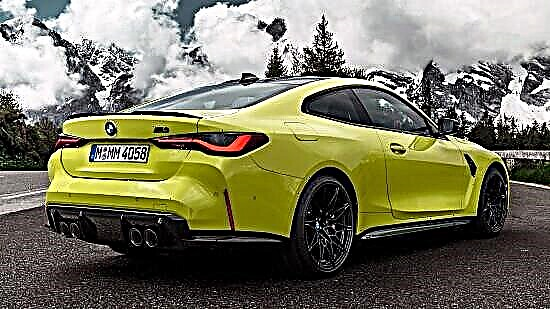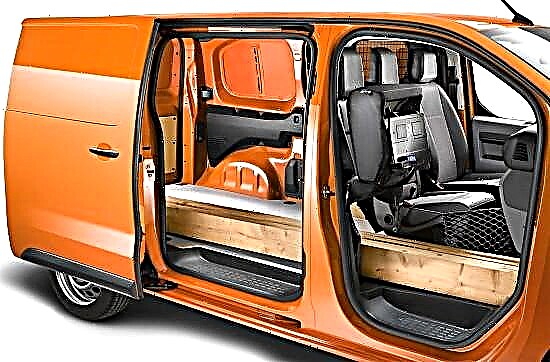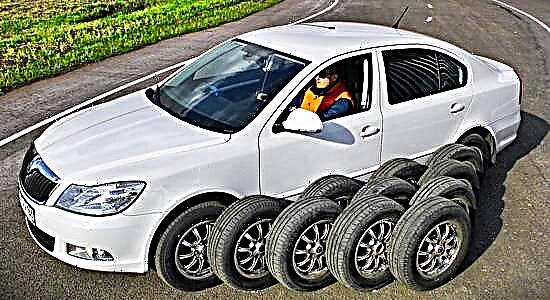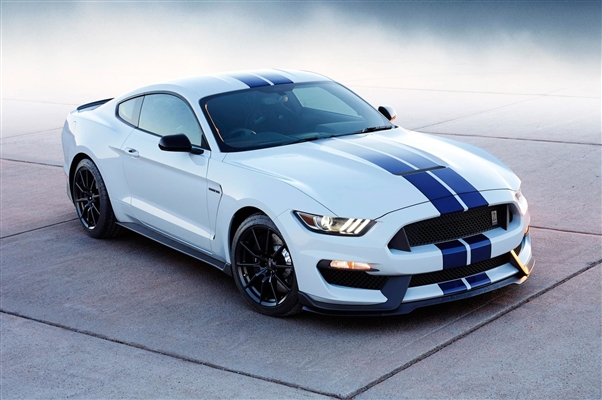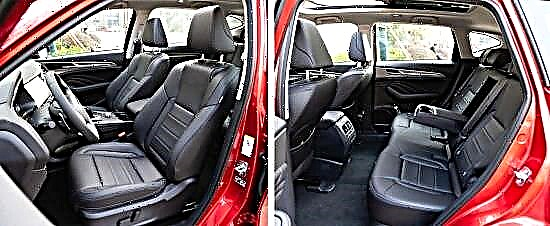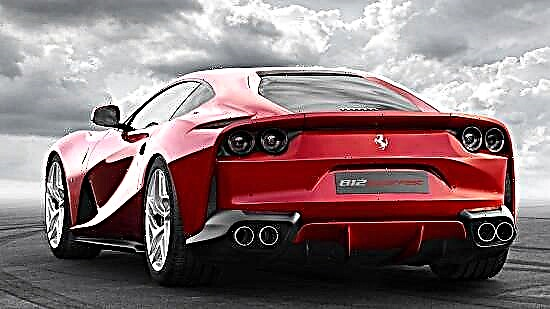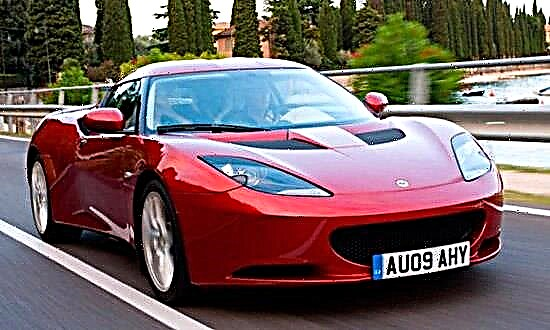The line of Lotus sports cars includes not only two-seater racing roadsters, but also a full-fledged sports car for everyday use, called the Lotus Evora. This rear wheel drive model has four seats, but at the same time retains the sporty spirit of Lotus and is ready to please its owner with a very powerful engine.
Externally, the Lotus Evora differs only slightly from other models of the English manufacturer. The front end of the sports car is most similar to the similar part of the body of the Lotus Elise. There is the same layout of the front bumper with a massive grille slot for the false radiator and two narrow air intake slots on the sides. The bonnet and ventilation grilles on it are also very reminiscent of the elements used in the exterior of the Lotus Elise. But the headlights got a completely different shape - they became much sharper and longer. In general, the front part of the body turned out to be noticeably sharper, as if striving for the contours of a rocket capable of dissecting space at an incredibly high speed. This desire is proved by the drag coefficient of the Lotus Evora body, equal to 0.33.

If we talk about the body of a sports car in more detail, then it consists of individual elements attached to a sturdy monocoque frame. The front and rear parts of the body are made of lightweight aluminum alloys that deform in the event of a collision, which reliably protects the driver and passengers from injury. In addition, the car is equipped with side frame reinforcements that protect the monocoque frame from damage when the sports car is rolled over. The body length of the Lotus Evora is 4342 mm, the width of the car is 1848 mm, and the height is 1223 mm. The wheelbase is 2,575 mm and the curb weight of the sports car does not exceed 1,382 kilograms.

If we continue to compare with other Lotus models, then the Lotus Evora has a wider door, which is dictated by the need to provide access for boarding additional passengers. As a result, the side air intakes for cooling the radiators have been significantly reduced in size and are located on the Lotus Evora above the rear fenders, directly below the rear window pillar. The roof of the sports car is decorated with a stylish aerodynamic cavity, and the rear is equipped with a cute spoiler, round headlights and a twin tailpipe.

Inside, the sports car looks attractive, pleasing the eye with its sportiness. For the front seats, the developers have placed a compact two-seater "sofa", bringing the layout of the cabin to the 2 + 2 scheme. True, one should immediately admit that sitting in the back is quite uncomfortable, there is a sorely lack of space, but it is quite possible to use the car as a family sports car, since the back seat will fit for a child. The front panel looks very nice, all the elements are grouped for quick and easy access to the car control functions, the driver will not find anything superfluous on the panel. The front seats are divided by a high partition that accommodates the gearshift and parking brake levers, and also smoothly merges into the inclined center console. The interior decoration is at a height, all elements are securely attached, there are no gaps, the quality of the materials meets the highest standards.
Speaking more specifically about the technical characteristics, the Lotus Evora is equipped with a Japanese 3.5 DOHC V6 VVT-i Toyota 2GR-FE gasoline engine with six V-shaped cylinders with a working volume of 3.5 liters (3456 cm³). The power unit used is capable of delivering power equal to 280 hp. at 6400 rpm, while having a maximum torque of 346 Nm, developed at 4600 rpm. The engine's capabilities are enough to accelerate the Evora to the limit of 262 km / h, while accelerating to 100 km / h takes only 5 seconds.
The engine is equipped with a standard 6-speed manual transmission, equipped with a driver alert system for the most convenient moment to shift gears, which allows for ideal acceleration dynamics and saves fuel while traveling. By the way, about fuel. The Lotus Evora sports car consumes about 13.2 liters of gasoline when driving in the city, about 7.1 liters when driving on the highway and about 9.3 liters when driving in mixed mode (city / highway).
The Lotus Evora sports car is equipped with a fully independent suspension with forged aluminum double wishbones. In addition, the sports suspension of the car is complemented by anti-roll bars, Bilstein gas monotube shock absorbers and Eibach coaxial springs. The already easy control of the car is facilitated by the hydraulic booster, and for a more accurate transmission of torque, the sports car is equipped with an electronic differential lock, manufactured by Bosch.
The braking system of the car consists of AP Racing four-piston compound calipers, ventilated discs at the front and rear (350 and 332 mm in diameter, respectively), and a Drum-in-Disc handbrake. In addition, Lotus Evora is equipped with an electronic brake force distribution between the wheels of the car and the Lotus DPM stability system. At the front, the sports car is equipped with 18-inch wheels, and 19-inch wheels are installed at the rear.
In addition to the standard Lotus Evora model, the manufacturer also supplies the Russian market with the Lotus Evora S sports car, which differs from the original by the presence of a more powerful engine and slightly modified dimensions (4361x1972x1229 mm, weight - 1436 kg). As a power unit in the Lotus Evora S, the British developers use a six-cylinder turbocharged engine 3.5 DOHC V6 VVT-i SUPERCHARGED of Japanese production, having a working volume of 3.5 liters (3 456 cm³) and a power of 350 hp, reached at 7000 rpm ... The engine torque is 400 Nm at 4500 rpm. A more powerful modification of the Evora S is capable of accelerating to 286 km / h, and a speed of 100 km / h is gained in just 4.6 seconds. The gearbox for the Evora S uses the same 6-speed factory mechanics as in the base version of the car.
For fans of automatic transmissions, the manufacturer has provided the Lotus Evora IPS and Evora S IPS models, equipped with a 6-speed fully automatic Intelligent Precision Shift, which is able to precisely select the most suitable timing for gear changes. The IPS automatic transmission is adapted for a sporty driving style, but it also copes well with driving in the city, providing comfort throughout the journey, from the start to the braking of the car. The only drawback of versions of Lotus Evora with "automatic" is a decrease in the maximum speed and an increase in the acceleration time to the first hundred.
The standard modification of the English sports car Lotus Evora in the offices of Russian dealers is offered at a price of 3,962,000 rubles. A more powerful version of the Lotus Evora S will cost the buyer at least 4,484,000 rubles. The cost of these modifications, but already equipped with an IPS automatic transmission, is 4,078,000 rubles and 4,600,000 rubles, respectively.

